Make smart choices
Even when buying new items, the previous ideas can help you to create a functional and sensible wardrobe. There are several advantages to focusing on your personal style and preferences, such as:
Waste that pollutes the least is that which is not produced (Source Recyc-Quebec). According to studies, we often wear the same clothes. Approximately 80% of what’s in our closet is unused. Knowing precisely what you have in your closet helps to limit unnecessary expenses. Use one of the many available reorganization solutions for a better idea of what’s there. Discover some helpful tips for consuming more responsibly here.
40-piece wardrobe
Read more40-piece wardrobe
Reorganizing your closet lets you know exactly what you have on hand and simplifies your life. Learn More
Steps to follow:
80/20 rule
Read more80/20 rule
Know how to balance the style of your clothes, 80% basic (or classic) and 20% funky/colourful to spice up your style!
Breathe style into your outfits using the 80/20 method for a minimalist wardrobe.
How?
Why?
Organization of the storage space
Read moreOrganization of the storage space
Several techniques can be used to keep your closet well-organized, depending on the configuration of your space.
Optimize space by arranging your clothes efficiently and making them easily accessible:
Reorganizing your closet lets you know exactly what you have on hand and simplifies your life. Learn More
Steps to follow:
Know how to balance the style of your clothes, 80% basic (or classic) and 20% funky/colourful to spice up your style!
Breathe style into your outfits using the 80/20 method for a minimalist wardrobe.
How?
Why?
Several techniques can be used to keep your closet well-organized, depending on the configuration of your space.
Optimize space by arranging your clothes efficiently and making them easily accessible:
At the beginning of each season, our first thought is to buy new clothes to update our wardrobe. But there are different ways to prolong the use of your clothes. After an initial sort-through, you can preserve, alter or donate what you no longer use. This is a great way to minimize expenses while keeping a functional wardrobe.
Read moreMaintenance
Read moreMaintenance
Prolonging the use of your clothes starts with proper care. The labels and the fabric’s material must be considered.
There are several ways to increase the chances of keeping a garment longer.
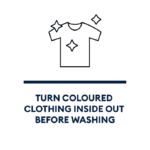
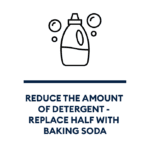





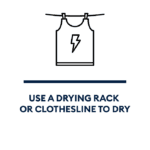








Repair / Transformation
Read moreRepair / Transformation
Favour the repair and alteration of clothes to facilitate wearing them longer and reducing your ecological footprint.
Before disposing of used clothing, you can find a way to repair or alter them. The impact is substantial:
If you don’t know how to sew, ask someone you know! You can also find a professional in your neighbourhood who offers sewing services (tailor, dry cleaner, etc.).
Upcycling, or creating something new from what you already have, is good for the wallet and the planet. A piece of clothing that is no longer worn but is made of beautiful fabric can be transformed into a new garment, product, or accessory. The Renaissance EcollaboratorsTM may inspire you.
Donate or recycle
Read moreDonate or recycle
It is always possible to donate or recycle your clothing rather than throw it out.
Optimizing the chances of giving a second life to your clothes is very doable and close to home. You contribute to the protection of the environment by:
Prolonging the use of your clothes starts with proper care. The labels and the fabric’s material must be considered.
There are several ways to increase the chances of keeping a garment longer.


















Favour the repair and alteration of clothes to facilitate wearing them longer and reducing your ecological footprint.
Before disposing of used clothing, you can find a way to repair or alter them. The impact is substantial:
If you don’t know how to sew, ask someone you know! You can also find a professional in your neighbourhood who offers sewing services (tailor, dry cleaner, etc.).
Upcycling, or creating something new from what you already have, is good for the wallet and the planet. A piece of clothing that is no longer worn but is made of beautiful fabric can be transformed into a new garment, product, or accessory. The Renaissance EcollaboratorsTM may inspire you.
It is always possible to donate or recycle your clothing rather than throw it out.
Optimizing the chances of giving a second life to your clothes is very doable and close to home. You contribute to the protection of the environment by:
The habit of buying locally and shopping at second-hand stores is becoming increasingly observable in consumer behaviours. Buying second-hand contributes to the buy local movement since the clothing is sourced from the community. Buying locally means consuming more responsibly to limit the environmental impact and contribute to the community’s economic health. Buying second-hand prolongs the use of a product, creates employment locally and often contributes to a good cause.
Read moreConsuming better means consuming locally
Read moreConsuming better means consuming locally
Encouraging local commerce contributes positively to economic, environmental, and social outcomes.
When you buy new clothes in a local store, you contribute to the development of the Quebec market and have a positive effect on the local economy. The impacts are economic, environmental and social.
Economic impacts:
Social impacts:
Environmental impacts:
Opting for quality
Read moreOpting for quality
Before getting to the purchase stage, take a few minutes to analyze the product that interests us.
By opting for quality, you buy a more expensive garment but one that will last longer and avoid future unnecessary purchases.
We recognize the quality of a garment by touching or trying it on:
Rent, borrow, exchange
Read moreRent, borrow, exchange
Renting clothes allows you to refresh your wardrobe and dress up for a special occasion or a short time.
Between local shops, dedicated online applications or your friends and family: several options are available for renting clothes and accessories. This practice is even more useful for events such as weddings, celebrations, pregnancy, and a baby’s first months.
The advantages of renting:
In addition, you can also opt for a subscription service that allows you to choose several items and wear them for a limited time. For example, after one month, customers simply send the clothes back to be washed and re-selected for the next month.
Buy second-hand
Read moreBuy second-hand
Purchasing second-hand has several advantages.
Thrift stores offer the opportunity to buy clothes at more affordable prices and often without taxes. By Integrating second-hand clothing into your shopping habits, you will:
Encouraging local commerce contributes positively to economic, environmental, and social outcomes.
When you buy new clothes in a local store, you contribute to the development of the Quebec market and have a positive effect on the local economy. The impacts are economic, environmental and social.
Economic impacts:
Social impacts:
Environmental impacts:
Before getting to the purchase stage, take a few minutes to analyze the product that interests us.
By opting for quality, you buy a more expensive garment but one that will last longer and avoid future unnecessary purchases.
We recognize the quality of a garment by touching or trying it on:
Renting clothes allows you to refresh your wardrobe and dress up for a special occasion or a short time.
Between local shops, dedicated online applications or your friends and family: several options are available for renting clothes and accessories. This practice is even more useful for events such as weddings, celebrations, pregnancy, and a baby’s first months.
The advantages of renting:
In addition, you can also opt for a subscription service that allows you to choose several items and wear them for a limited time. For example, after one month, customers simply send the clothes back to be washed and re-selected for the next month.
Purchasing second-hand has several advantages.
Thrift stores offer the opportunity to buy clothes at more affordable prices and often without taxes. By Integrating second-hand clothing into your shopping habits, you will:
Make smart choices
Even when buying new items, the previous ideas can help you to create a functional and sensible wardrobe. There are several advantages to focusing on your personal style and preferences, such as:
Quiz
How to build a wardrobe?


EcollaborateurTM refers to any committed and inspired person who adheres to social and environmental values and decides to collaborate with us through a powerful vector: sharing. Learn more about our Ecollaborators.
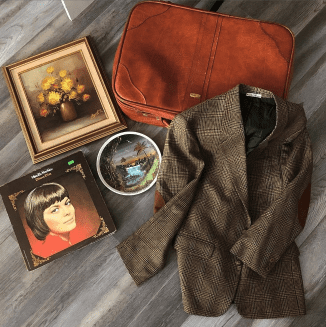

« De nombreux préjugés circulent autour des articles de seconde main, mais peu de gens réalisent la beauté et l’histoire que chaque objet porte en lui. J’aime les choses plus anciennes que les gens ont utilisées et chéries. Elles ont une personnalité, un caractère et une âme. De plus, acheter des vêtements/objets d’occasion en friperie permet de mieux utiliser nos ressources. »
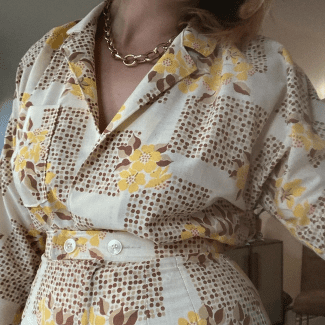

« Parfois jusqu’au fil, Marcelyne recycle tout! Il faut avouer qu’en plus de ne consommer que du seconde main, c’est aussi chiner beaucoup beaucoup beaucoup de vintage, un de mes passe-temps préférés. (Sur la photo) Ensemble fabriqué à partir d’anciens draps chinés chez Renaissance Québec. »


La meilleure saison pour les balades en nature et les tenues réconfortantes,
Mon pull en sherpa trouvé au Renaissance est parfait tout le mixte des deux, il me suit partout 
